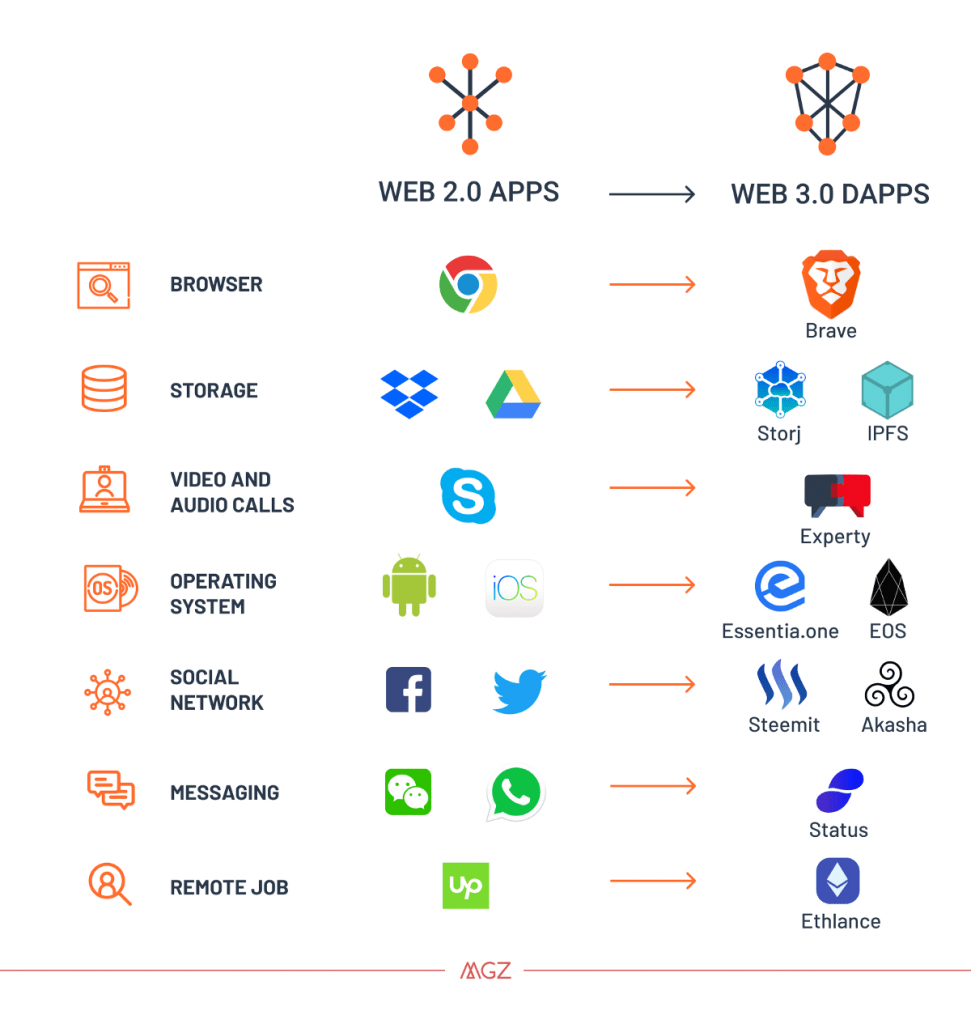Katherine, Christopher, Arkin, and Rae shared a couple of interesting videos. In “Canada Gets Wired – Then vs Now,” the example of emoticons evolving into emojis as a new visual language is a simple version of Gerstein’s (2014) metaphor of the evolution of the web. The world is indeed evolving online, as is evidenced by the statistic that 5.5% of Canada’s economy in 2017 was made up of the digital (or Internet) economy (Moreau, 2021).
The presenters broke down the three versions of the web and the related learning theories well:
- Web 1.0 is a content delivery network (behaviourism, objectivism).
- Web 2.0 is known as the “participative” and “read-write” (cognitivism, constructivism).
- Web 3.0 describes the many evolutions of web usage and the interaction among several paths (connectivism, heutagogy).
Education is impacted by the shift to Web 3.0 as it increases screen time and the possibility of global connections. Gerstein (2014) identifies the roles of learners in Web 3.0 as connectors, creators, and constructivists. The second video shared in this presentation, “How Social Media is Affecting Teens,” points out a shift in values in today’s youth, from group belonging to fame. The video also discussed the risk of being cyberbullied on social media.
Katia brought up an interesting point about the possibility of Web 3.0 decentralizing aspects of education (e.g., more democratization of knowledge, different worldviews are allowed and embraced). This would be a major shift in Saskatchewan’s PreK-12 system as we have had increasing levels of centralized policy and planning direction from the provincial government since the amalgamation into 27 school divisions in 2003, as well as the current 100% of provincial funding.
The shift to Web 3.0 privileges students and teachers who have consistent access to electronic devices and a strong internet connection. Independent, self-determined, self-driven, creative students will thrive in a Web 3.0 learning enviornment. Similarly, creative and experienced teachers would excel at developing engaging assignments in this context. The presenters noted that Western, gendered perspectives on the web is the dominant discourse. This means that privileged groups (i.e., White, male) are more likely to excel in a Web 3.0 environment.
Students and teachers who are disadvantaged by the shift to Web 3.0 are those who lack access, have a conflict of interest because of their culture or religion, those who are concerned about privacy and data issues, and Indigenous peoples (oral, land-based learning and ceremonies are difficult to do online). In 2018, Statistics Canada (as cited in Moreau, 2021) reported that 1.2% of households with children did not have internet, and 4.2% of the families with the lowest income did not.
The quote from Bates included in the presentation stood out to me and demonstrates the need for Web 3.0 knowledge and skills among both students and teachers:
References
Gerstein, J., (2014). Moving from education 1.0 through education 2.0 towards education 3.0.
Moreau, N., (2021). Internet in Canada. In The Canadian Encyclopedia.

This visual affirmed my understanding of Web 2.0, but made Web 3.0 more confusing. I don’t recognize the names or logos of any of the apps listed underneath Web 3.0. I also had to look up the meaning of DAPPS, or decentralized applications, which ties back to Katia’s earlier comments.
I am still having a tough time imagining how decentralizing education and the web would look like. Although there are many aspects of Web 3.0 that I am excited about, there are also a lot of concerns I have with privacy, data collection, and sharing. Also, I think Web 3.0 would work well in post-secondary and maybe even secondary situations, however, in the middle grades I am unsure of how many are truly self-directed learners as they haven’t had a ton of time to experiment with this ideology or real-time to practice it. I think another part that is missing in the middle grades is self-motivation and determination. I think these are two factors that would highly contribute to the success of self-direction. How do you think Web 3.0 would really work in the primary grades?
I agree with Kelly as I’m not sure what this would look like in primary education. That motivation and self-direction is something that even secondary and post-secondary students struggle with. I know in our science courses, there’s a self-directed study component where students explore a topic of their choice in more of an inquiry-based assignment. I see something like this lending itself more to the principles of 2.0/3.0.
As a grade 2/3 teacher, I can concur that my students are not likely to successfully navigate and apply Web 3.0 tools on their own. We spend a lot of time in the beginning of the year to build skills to use Seesaw independently, which I think would be more of a Web 2.0 tool. I wonder if the evolution from Web 2.0 to Web 3.0 can be used across the grades too; focus on developing Web 2.0 skills in the primary grades (and possibly middle years as Kelly mentioned), then transition to some Web 3.0 usage once students are older. I like Mike’s idea of an assignment or project having both Web 2.0 and Web 3.0 features. The teacher’s comfort and skill levels will also determine which version students are being exposed to.